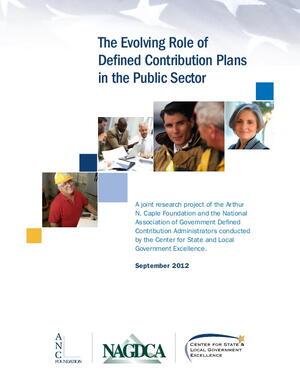
The role of defined contribution plans for state and local government employees is evolving. This change is being driven by several factors including flat government revenues, increased demand for services, economic uncertainties, concern about future benefit costs and risk exposure, and a wide range of related political debates. Traditional defined benefit public sector retirement plans are under pressure to make structural changes with governments making a range of changes that seek to reduce or control employer contributions and address unfunded liabilities. State and local government defined benefit plans have historically offered a reliable and adequate level of retirement income. Defined contribution plans have played a useful role as supplemental saving vehicles, but, with some exceptions, have not focused on becoming the primary income replacement resource. As public sector employees face greater financial pressures and employers continue to make changes to primary pension plans, it is time to review the role and design of defined contribution plans in the public sector.
